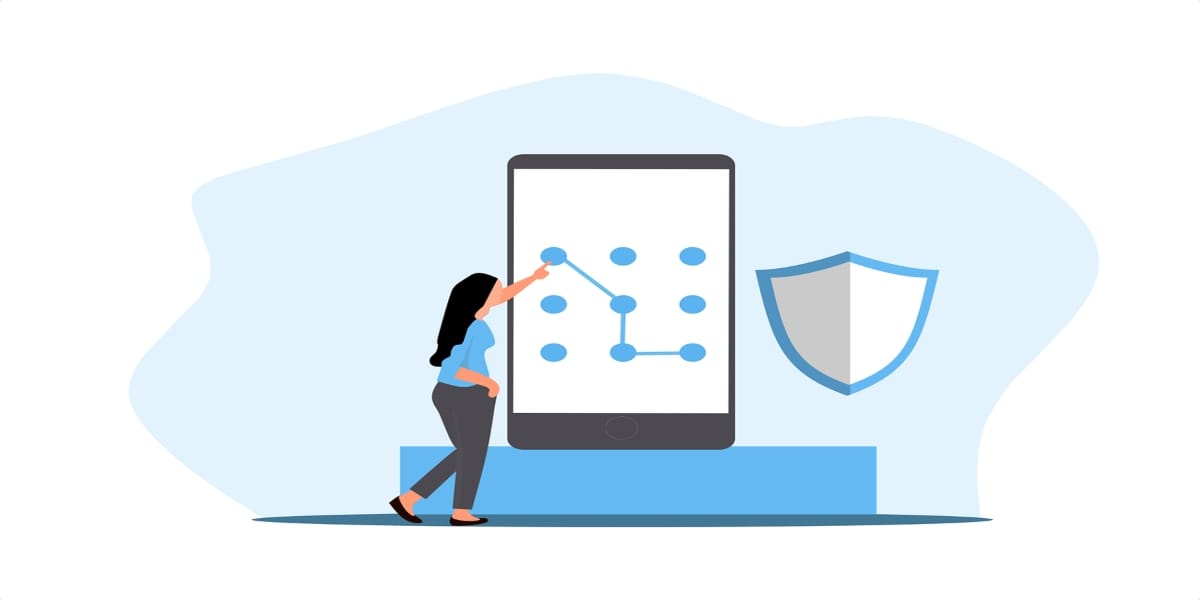Best Practices to Keep User Data Secure While Developing a Mobile App
What is the largest difficulty that organizations encounter when creating a mobile application? Data security and privacy for users! Protecting consumer data is one of the main issues in today's digital world. Data security management has been made a requirement throughout the creation of mobile apps due to

What is the largest difficulty that organizations encounter when creating a mobile application?
Data security and privacy for users!
Protecting consumer data is one of the main issues in today's digital world. Data security management has been made a requirement throughout the creation of mobile apps due to the increase in cyberattacks and breaches. Hackers are experimenting with new methods and strategies to take advantage of flaws in mobile applications as the security of these applications is currently at stake.
Therefore, enterprises must implement the greatest security methods to protect the user data in their applications. According to the study, one or two harmful programs are downloaded by employees of firms in close to 50% of cases.
Additionally, 40% or so of mobile apps are still susceptible to hackers. Because of this, users are less trusting of new applications and are more hesitant to utilize them. However, there is a fix for it. It is always a good idea to know what to do and what to not, as that’s how you can be aware of security while using any mobile application. Here, you will get to know about some fruitful mobile app security practices that you can apply to have a secure user experience.
Try the following mobile app development security best practices if you're creating one to safeguard your consumers' data.
What is Mobile App Security?
By adopting common security measures, mobile app security shields the program from external dangers like viruses and other online threats. Financial and other sensitive data are vulnerable to hackers because of malware and other internet risks.
Mobile application security is now crucial in the modern digital environment. A smartphone security hole might allow hackers access to user personal information. Security protocols are employed when creating mobile apps to prevent user data from being exploited or leaked.
Best Practices for Mobile App Security While Development
Encrypt the app or software source code
Mobile or software app security is inevitable, whether you are building a small or big one. For that, it is important that you encrypt the source code to secure your app. The reason you must encrypt your source code is that it will help you prevent hackers from making any changes to your actual code and even accessing the app. Also, research has shown that this is the major concern mobile app developers have, as hackers often target this to modify source code. You need to buy code signing certificate to encrypt your source code and prevent your app from hackers from reading the code and also to stop damage from security threats. The tip of the iceberg is that as a developer, you need to take care that you follow best practices to sign your source code while developing a mobile app.
Perform a thorough security check
Verify the reliability and safety of a mobile app before releasing it to the public. The objective is to identify points of weakness in the software. Even after the app has been released, testing should continue regularly.
The development team may skip quality assurance checks to prepare the software for a timely release. Even though vulnerabilities in apps pose a security risk for end users. A developer can verify the safety of an app by doing the following steps:
- Audit and test the code to ensure the authentication and authorization processes work perfectly.
- Put the mobile app through its paces using an OS emulation tool.
- Data security holes can be uncovered by checking access controls.
Data Encryption
Bugs can be introduced by careless coding or inadequate testing. It opens mobile apps to being exploited by malicious actors. Encryption is one method for getting around this problem.
Code encryption and data encryption are the two main types of encryption. The text (code) is encrypted using a series of numerical codes. It protects information by making it unintelligible to would-be thieves.
Meanwhile, data encryption transforms information into an unintelligible numerical code. Data can be encrypted in one of two ways: symmetrically or asymmetrically. Both the encrypting and decrypting processes in symmetric encryption use the same key.
Implement File-Level & Database Encryption
Many mobile apps keep their unstructured data in the local file system or a database on the device. The sandbox environment is vulnerable to attackers who could compromise the system without encryption. You can lessen your exposure by encrypting this information.
Similarly, you may employ file-level encryption across various platforms or implement data encryption in mobile apps with SQLite Database Encryption Modules to protect attackers from accessing important information.
Always encrypt private information before saving it to a server or database, regardless of the mechanism you use. Use cutting-edge cryptography methods and thoroughly test your mobile app for vulnerabilities before releasing it to the public.
Avoid using third-party libraries
Compared to building an application from scratch, leveraging third-party libraries makes coding easier for developers. Additionally, numerous free libraries make invoking particular functions simpler. Use these libraries cautiously, as they may expose your app to security risks.
Be extra cautious when using third-party libraries. Examine the library's various versions and thoroughly test the code before including it in your program. Many of the biggest coding libraries still have security problems after being thoroughly examined or when a new vulnerability appears.
To prevent your apps from being vulnerable to potential flaws in these libraries, use a few internal controller repositories and policy constraints. These rules will make it easier to separate the data layer.
Control data sharing within apps
The potential of data sniffing for developers who want to share information between apps is substantial. If hackers figure out how you send data and find out it's not encrypted, that's a concern.
Signature-based permissions can keep data transfers between your apps free of unwanted interference. These permissions are automatic, so the apps continue to work as intended. Instead, they check to ensure all the apps that can access the data use the same signing key and signature.
Refrain from depending on a single security platform
The use of mobile devices, as well as the creation of applications, are continually changing, making them vulnerable to new cybersecurity risks. Strong data security is, therefore, something that is becoming increasingly important. Platforms that assist developers in enhancing user privacy have emerged as a result.
Understanding the platforms that are accessible and educating consumers on how to utilize them is crucial for mobile developers who want to keep data secure. Use a wide variety of security systems, though, to be safe.
Establish secure credentials
Is a login and password required for your mobile app? If so, what steps can you take to ensure that data is not vulnerable to a cyberattack?
Multi-factor authentication is helpful in this situation. A person is given access only after supplying multiple factors via a mobile app. Someone with their username and password stolen by a third party won't be able to use the app because they won't give the additional information required to authenticate access.
Practice Continual Testing and Updating
A mobile app's security necessitates ongoing attention. New solutions are required as new threats materialize. While it may be alluring to concentrate on the app's visual appeal and usage, ensuring continuing security is a crucial differentiator for success.
By automating testing as part of the CI/CD process, investing in a complete mobile app testing solution will help you stay on top of these dangers. You may hasten the development of your mobile app and get it to market in a couple of weeks by integrating testing into the pipeline.
Conclusion
Creating a secure mobile application only takes following the recommended practices for secure mobile app development. It aids in preventing vulnerabilities that could significantly harm the application.
Therefore, all business owners should start with solid code that adheres to professional coding standards and uses clear function calls. Additionally, by putting security above practices and buying code sign certificates for mobile app development into practice, you may run a profitable business application while protecting the data of your users.






